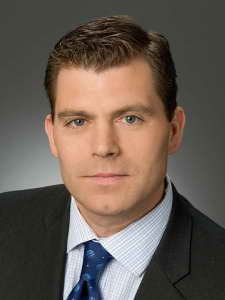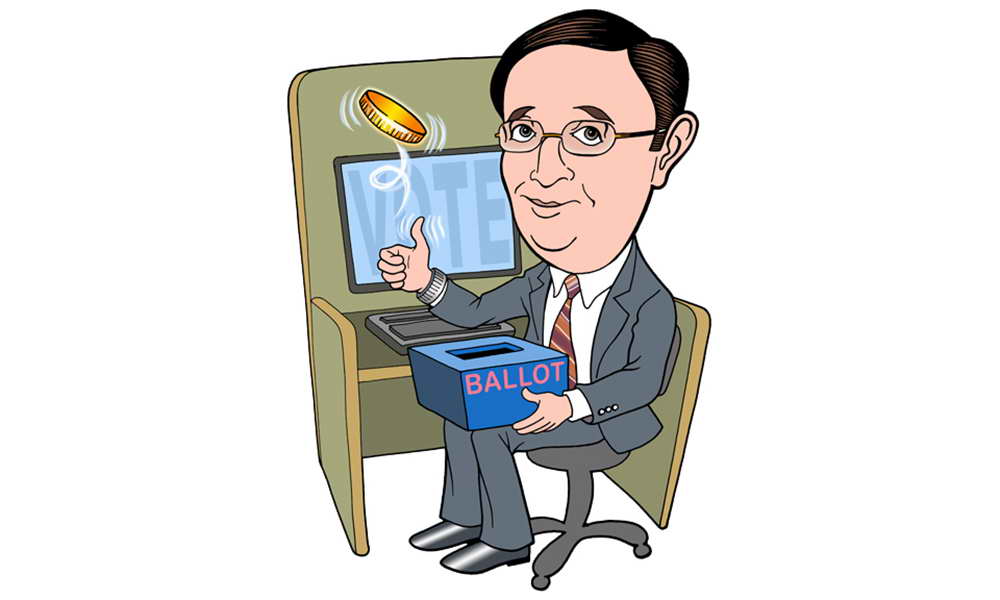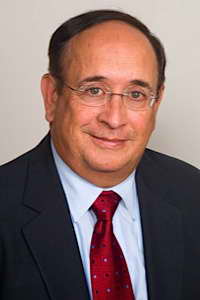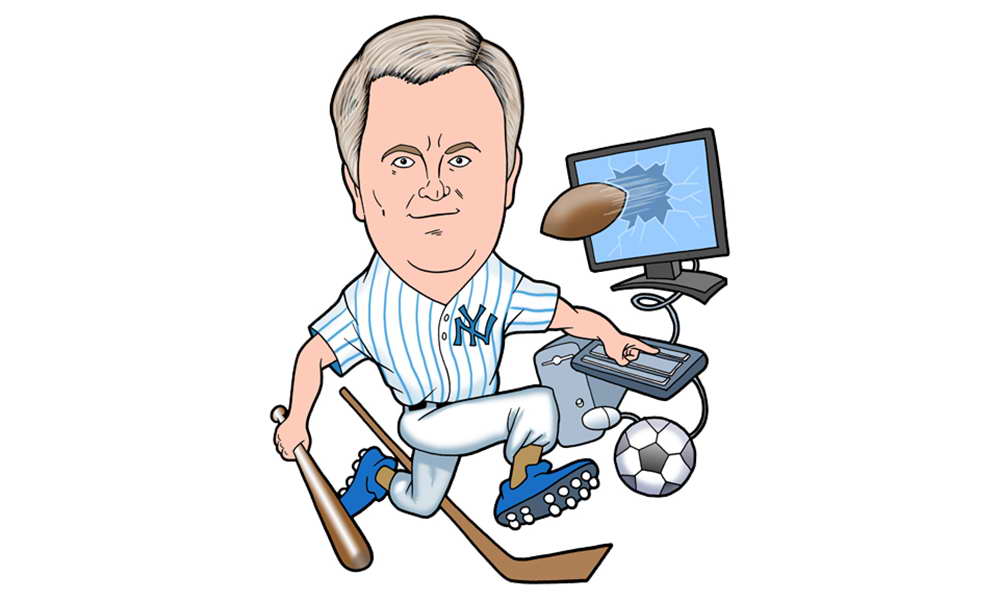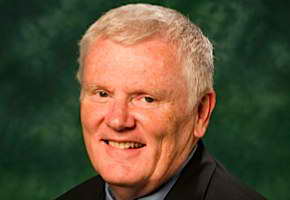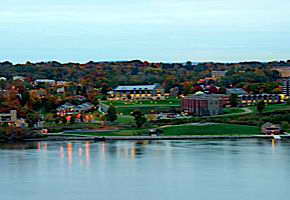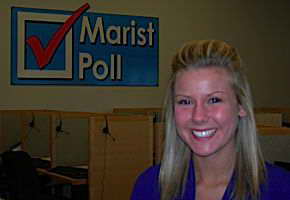By John Sparks
Sports Author Ray Robinson discusses the economics of baseball and offers a unique perspective on the history of the game. Here’s a transcript of Robinson’s interview with The Marist Poll’s John Sparks.
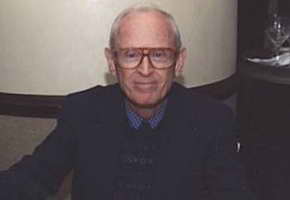
John Sparks
Ray, attendance may have increased for professional baseball last season, but our recent survey indicates that most fans do not think that the cost of a ticket is a good value for their money. Why do you think that is?
Ray Robinson
I think it is because they’re charging inordinate prices, and the word that I get in talking to some people in and around baseball and other fans is that the price is, certainly here in New York at Yankee Stadium and the new Met field, are just way out of line; and combined with the prices they’re charging for food at these two new baseball palaces, I think you’ve got to be a millionaire to go to these games, and I’m not too sure that there are many millionaires left.
Listen to Part 1 of the interview:
John Sparks
You told me the story of your doorman and his practice of going to the game. Could you tell me again how many times he goes and what it cost him to take his family?
Ray Robinson
Well, this is a fellow who’s in his 50’s who has two young children in their teens, two boys, who are big baseball fans. They’re Latinos. They’re all Puerto Ricans and very knowledgeable baseball fans. They love the game. They follow the game. They probably know more about it than most baseball writers, and they used to go as a family two or three times a year as an exhibition and almost like something of a summer vacation; and now this fellow told me only the other day, he thinks he’ll be lucky to go once a year with the two boys and his wife, and he says it’ll cost anywhere between $300 and $400. You have to remember when you take youngsters to a ball game, they want everything in sight. So, therefore, you can’t scrimp. You buy everything from the program to the hotdogs to the beer to the soft drinks to other food delicacies, and it costs an inordinate amount of money, and he said that he’s going to decrease his voyages to the ballpark, in his case the Met Park, from three a year to one. Now that may be a fairly typical example, I think, in the New York area.
John Sparks
Ray, I’m curious, you followed the game all your life, and we will talk about that in a moment, but I’m just curious how many games you went to last year.
Ray Robinson
Well don’t forget, I’m not the typical example because I’m now what they call a grise eminence, both at the stadium and at Shea – – and the Shea Field, which is now Citi Field. And I’m lucky enough to be invited to go either by people who work for those two teams or by friends of mine who have tickets. So I can go, you know, I shouldn’t rattle my mouth off. I don’t pay to go anymore. I guess if you reach the age of close to 90, they let you get in for free. But any rate, I think last year I saw about 15 games.
John Sparks
Now you alluded to the fact that we have brand new ballparks for both the Yankees and the Mets.
Ray Robinson
Yes.
John Sparks
The cost of those tickets has never been higher. Do you think that these seats and luxury boxes will be filled this season, and who’s going to buy them?
Ray Robinson
As I say, I’m not a mathematician, nor do I work for the front offices of those two clubs. But the word I get from so-called inside people is that the sales are not going well, and so the most expensive seats are not selling, and all you have to do is look at the fact that the Mets and Yankees are advertising in the daily newspapers here to try to get rid of the high priced tickets. That seems to indicate they’re not getting rid of all these seats.
John Sparks
Now you mentioned your age, you’ve been…
Ray Robinson
I’ll be 89.
John Sparks
You’ve been privileged to see a lot of good baseball in your time.
Ray Robinson
My first Major League games, I attended Yankee Stadium in 1928 when I saw some of the great players, Murderer’s Row — Gehrig, Ruth, Herb Pennock, Waite Hoyt, all those great teams. I was a little too young to the see 1927 team which was supposed to be the greatest team of all time, but I saw the residual members of that team in 1928, and I’ve been going to games both at Yankee Stadium, the Polo Grounds, Ebbets Field all of my life, and you know, I love the game. I still do despite all the difficulties of one kind of another they’ve had. And gosh, you know I – – even though I take exception to some of the cultural behavior of some of these players, I still love the game and I still follow it…
John Sparks
Ray…
Ray Robinson
…and I write about it of course.
John Sparks
Certainly. Ray, let’s talk about those days when you did watch Ruth and Gehrig. What did a ticket cost you back then, and tell me a little bit about the fans that were there at the ballpark? It was the depression era as I recall.
Ray Robinson
Well, during the depression period, maybe this is a little bit aside from what your question is about, but you know 1930, which was one of the first years of the Great Depression, was actually a fairly good year for baseball, which is ironic in a sense. However, as the batting averages of ballplayers kept rising, the attendance kept plummeting. I mean, you had some wonderful hitters in those years including the great Ruth and Gehrig, but you had fellows like Chick Hafey, you had fellows like Al Simmons and Jimmie Foxx and Mickey Cochrane and Chuck Klein. Their averages were enormous, but it really didn’t have an impact on the attendance. Attendance went to the dogs after 1930, and you went to a ballpark, in my case the Giants’ Polo Grounds, and the Yankees at Yankee Stadium, and the Brooklyn Dodgers at Ebbets Field, you always have very modest attendances in those years. It made for an entirely different ambience at a ballpark, and I have to tell you, some of my old friends like myself who are curmudgeonly characters, I guess like myself, love the ambiance of the ballparks in those years. They like the idea the ballparks weren’t full and that you could hear the bat hit the ball. You could hear the conversations between players because of the parks being empty and not full of noise and the distractions of the scoreboard telling you to yell, all those things. It was a totally different environment, much more quiet and subdued, and to me that was part of the pleasure of going to a game. It was an escape…
John Sparks
Now the tickets…
Ray Robinson
It was an escape from the noise and the hurly burly of the city.
John Sparks
Now the tickets didn’t cost so much back then either. What did you pay for a ticket?
Ray Robinson
Oh my. If I sat in the bleachers, it was 50 cents. And I invariably sat in the bleachers. And if I were perhaps lucky enough to get a reserved seat, it was $1.50/2.50., and I… Since I… The only time I ever sat in a box, I had a neighbor, a friend of mine who kind of liked kids like myself. Let’s say I was 10 or 11-12 years old, I had a neighbor who was friendly with John McGraw, the old manager of the New York Giants, and this neighbor had a box seat, and since my dad wasn’t interested in baseball and never took me to a game since he didn’t like Major League Baseball much, I used to go with this guy, and we’d sit in the box seat. Maybe it cost 2.50- 3 bucks, around there.
John Sparks
I believe back then besides youngsters like yourself, it was primarily men who went to the ballpark. You rarely saw women.
Ray Robinson
Yeah. All you have to do for proof of that, if you wanted scientific pictorial proof, take a look at the pictures that have been published over the years of people at early games. For instance, the opening game of the Yankee Stadium in 1923, you have these panoramic shots of the crowd, you don’t see any women, and the men were all dressed in straw hats, boaters I think they called them, and derbies, and they came with ties on. Some of them, believe it or not, actually wore vests, and it was almost an all male audience. I think in one picture I recall of the opening of the Yankee Stadium in ’23, the only woman I think I saw in the picture was the wife of the governor who attended the game, Governor Al Smith, the only woman in the whole picture.
John Sparks
So things are different today. We see women; we see ethnic groups, Latinos. Is this a conscientious effort on the part of the owners to try to attract a more divergent crowd?
Ray Robinson
Well, I think they have to if they’re going to keep the game alive. Don’t forget, I’m now talking of the New York area. I’m not speaking about other cities. In the New York area, you have a tremendous number of wonderful Latino players on both teams, and of course, it makes good business sense and horse sense to try to attract Latinos to the games. And they will go, and they have gone. But it seems to me that some of these prices are going to preclude some of them from going. I mean, I hope I’m not sounding like a Cassandra, but I think both the Yankee front office and the Met front office are aware of these coming problems. When they built these new ballparks, or when they started to build them, they didn’t have the economy in disarray as it is now. So therefore, they couldn’t know about these difficulties in attracting various groups to these stadiums. But my feeling is they’re going to have trouble with some of these groups that are not high income groups. So it makes sense that while they try to attract a lot of Latinos, for instance, to the two ballparks, they’re going to have trouble, and these are fervent knowledgeable fans.
John Sparks
Ray, you mentioned the economic disarray we’re in, and with more folks losing their jobs these days, do you feel there’s even more resentment for the astronomical salaries that some of today’s players are getting?
Ray Robinson
The answer to that would have to be yes. On the other hand, it’s very peculiar to me. I think in a strange way, the salaries made by some of these men, or all of them, most of them, which make many of them millionaires, including .200 hitters by the way, I think that’s one of the… It’s strange to me. I don’t quite comprehend it. I don’t find any particular great antagonism to the money these guys make, which may sound peculiar; but in a strange way, it becomes another appealing thing. I find a lot of these low-income people, and even myself occasionally, and my friends, who are not particularly low-income people, discussing these salaries as if it’s part of the appeal and charm of the game. It’s a new talking point. Weird, but it’s the case, I think. It’s not always resentment either. It’s not like the resentment over the AIG people or Bernie Madoff or that sort of thing. It’s almost an attractive element of the game. Frankly, a psychiatrist would have to explain it to me.
John Sparks
Ray, during the Great Depression, baseball provided many folks an escape from one’s troubles. Will it be the same today in this coming season with the economic woes…
Ray Robinson
…Well up to a point, yeah, but we’ve discussed the negatives, so it’s just a question of whether you want to escape enough to empty your bank roll, you know, which is, in a sense, is what we’re talking about here. And sure, it’s a great escape. I noticed already, for instance, if you want some, let’s say, some kind of economic proof that one of the industries doing enormously well right now are motion pictures. Well it’s a relatively cheap pastime, the same as it was during the Great Depression. I used to go to a movie then for 10 cents and spend five hours in the movie theater, a double bill, a comedy short, Movietone news, coming attractions, you could spend the whole day for 10…15 cents at a neighborhood theater. The prices aren’t that low now, but it’s still within reach. I mean, senior citizens of New York, movie theaters now pay about 8 or 8 and a half bucks, which is not cheap compared to the Great Depression, but it’s cheap relatively speaking. So, that’s why I assume many people are now going in for motion pictures as they may conceivably go into baseball, but baseball isn’t making it easy on them with these prices.
John Sparks
Another thing that I seemed to notice is that Major League Baseball has lost its appeal to our youth. Have we lost a whole generation of fans, and how and why has this happened?
Ray Robinson
Oh, I don’t think so. I think what you’ve… you know, they say a lot of kids now much prefer playing soccer, and they don’t play baseball. Well, that may be true. I mean if you read the same figures and statistics and research that I do, we’re dipping in now to Chinese players, to Korean players, to gosh knows Venezuelans, Ecuadorians, Puerto Ricans, et cetera., a wonderful source of talent that may or may not be because the talent isn’t in America anymore. I mean, yes, you have a lot of fine college baseball players, but how many of them are going in for baseball as opposed to professional football, which many good athletes play, as you know many play both of these games, and some athletes also play professional basketball, too. So, yes indeed, I mean some of the – – probably some of the pool of players is thinning out. I hate to think that, but I think it probably is.
** The views and opinions expressed in this and other interviews found on this site are expressly those of the speakers or authors and do not necessarily reflect the views of the Marist Poll.



